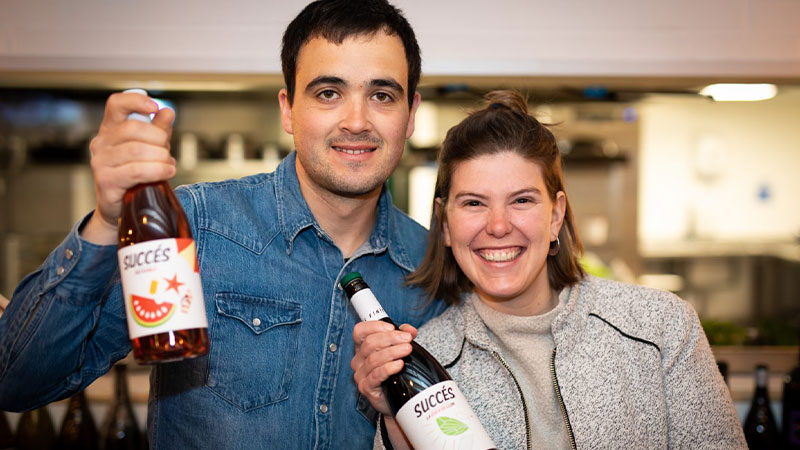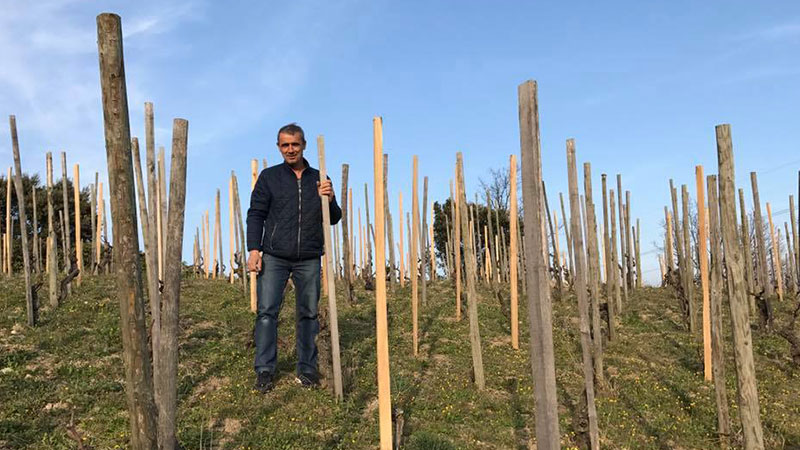Cava, the widely recognized sparkling wine of Catalonia, Spain, is produced in the traditional method from a unique blend of both native and internationally sourced grapes. The local varieties, most commonly Macabeo, Xarel-lo, and Parellada, are some of the most widely planted grapes in Cava producing regions, yet we rarely see them in their still form. With Cava’s whirlwind rise to popularity, winemakers are taking a step back to consider the region’s indigenous grapes and potential beyond bubbly, creating a unique category of exciting still wines.
The Backstory of Cava
Cava’s history can be traced back to 1872, when Catalan winemaker Josep Raventós Fatjó traveled to Champagne and returned home with knowledge of the méthode traditionnelle. He went on to produce the first wine with secondary fermentation occurring in the bottle in Spain using his estate’s local, native grapes. However, Cava was not established as a protected Designation of Origin (DO) in Spain until 1986. The volume of Cava produced in the subsequent decades gave it a reputation as being low in quality, and its dwindling reputation drove several top producers to disassociate from the DO.
In fact, the same family estate that established this tradition, now known as Raventós i Blanc, decided to leave the Cava DO in 2012, and create its own appellation, Conca del Riu Anoia. This designation is specific to the geographical area and has strict specifications to ensure the production of high-quality wines that use estate-grown native grapes and reflect the region’s specific terroir.
Don’t miss a drop!
Get the latest in beer, wine, and cocktail culture sent straight to your inbox.

In addition to sparkling wine producers ditching the Cava label, there is further backlash against Cava among smaller producers who aimed to recover the winemaking traditions that were prevalent before the Cava DO was established. Joan Vendrell, co-founder of the Mas Gomà winery in Penendès, works with land that has been in his family for five generations and is determined to revive the styles of wine that his ancestors produced. “Over the last 30 or 40 years, our region has mostly been known for sparkling wines made with the traditional method,” Joan says. “In our part of Penendès there was a tradition of making primarily skin contact and red wines.”
Joan and his father founded Mas Gomà in 2013, restarting the winery after their family had transitioned to selling grapes from their land to larger Cava producers. “Our idea is to go back to the times of our grandparents when there were more local grapes on the estate,” he says. “We had planted some French grapes to sell to big wineries, but now we are working to recover and recuperate the indigenous grapes, including Xarel-lo, Macabeo, Malvasia, Grenache, Red Xarel-lo, and Sumoll Blanc.”
Mas Gomà’s “El Turo de L’Ermita Blanco,” a Xarel-lo produced with light skin contact, is a great example of Xarel-lo’s potential as a still, varietal wine. Joan Vendrell describes the grape as adding the acidity, structure, and herbal notes to a Cava blend, and says that these qualities also allow it to shine as a still wine. Boasting tart green apple and citrus flavors with a chalky minerality, creamy texture, and lively acidity, this wine would have any lover of Chablis or Sur Lie Muscadet swooning.
The Natural Wine Effect
The priorities of wine producers and consumers have shifted in recent years, with many of these changes being grouped into the rise of natural wine, a movement that values organic farming, low-intervention winemaking, championing native varieties, and making drinkable, unique, and often low-alcohol wines. Mariona Vendrell and Albert Canela held these values in mind when they started the Succés Vinícola winery in the small region of Conca de Barberà in Catalonia in 2011. This region is home to native grapes like Parellada and Trepat that are often used in small percentages in Cava blends, but there has also been an influx of international varieties like Chardonnay in recent years to support Cava production.
Mariona and Albert’s goal of making low-intervention wines that celebrated their region’s local grapes drove them to forge their own path outside of the Cava DO. “Cava regulations do not motivate us,” says Mariona. “The process is very technical, and you have to use selected yeasts and other oenological products that we are not interested in using.” Additionally, Trepat and Parellada were looked down upon in the region. “The market wanted more alcoholic and full-bodied wines, but we wanted to show that good wines can be made from these lighter varieties,” she says.

Parellada has been largely pigeonholed by large producers into its role as a Cava blending grape, but Succés showcases its unique properties, including its spicy, herbal aromas, by producing it as a skin-contact still wine. It takes a similar approach with Trepat, whose lightness has been looked down upon, but ultimately makes for a lovely still red wine.
Costador, an organic and biodynamic winery run by Joan Franquet in Catalonia, holds similar values, making natural wines that showcase less loved local grapes. Costador works with vineyards that are 60 to100 years old, and the wines can be easily recognized by their iconic clay bottles. Offerings include an orange Xarel-lo, 100 percent Sumoll Blanc, and an “Orange de Noirs” blend of 70 percent Sumoll Negre and 30 percent Xarel-lo Vermell.
Going Backward to Move Forward
“I am very happy about the evolution of Penendès from 20 years ago. My generation is trying to recover the idea of small producers making wines from the estate,” says Joan Vendrell. “I think Penendès is now a region with a higher percentage of natural farming in Spain. Small producers here care about the land, and we work well with others in the association and are always looking to move each other forward.” For consumers who have been introduced to the wines of these regions through Cava, this movement will bring an entirely new category of unique still wines to explore and enjoy.


